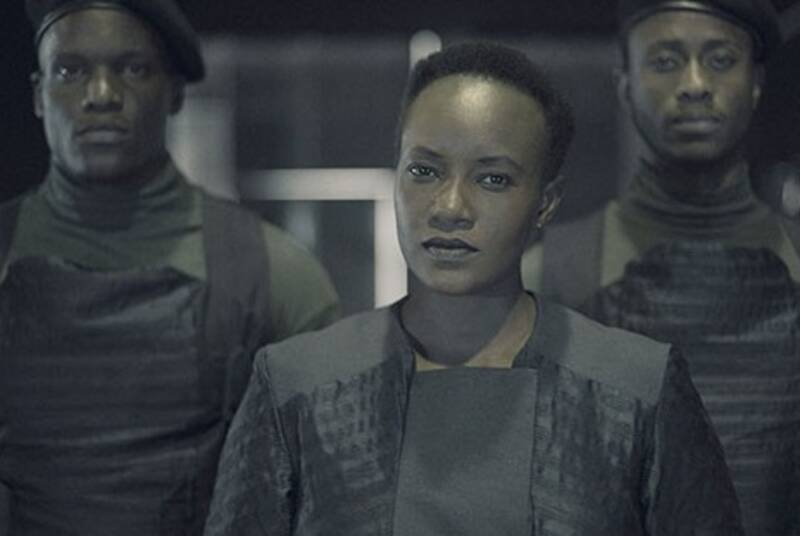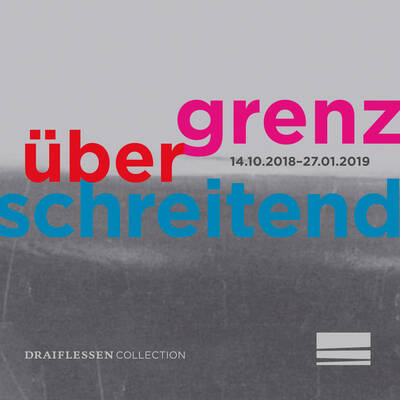across boundaries
across boundaries
Draiflessen Collection, Mettingen
14 October 2018 27 January 2019
The need to situate oneself spatially and mentally in the world is deeply anchored in people. Maps shape how we perceive the world and what points of orientation we choose in a decisive way. As a medium of presentation and communication they convey existing and aspired to world orders and actively contribute to shaping them. With the exhibition across boundaries, the Draiflessen Collection is dedicating itself to the qualities of maps as surfaces for projecting the world. The exhibition puts maps from various epochs in relation to artworks by international artists that examine the cartographic depiction of space or the influence of maps on our view of the world.
The Exhibition
Starting from the characteristics of maps, the exhibition is structured in three closely interlinked areas: 'Knowledge', 'Imagination', and 'Power'.
Knowledge
The area sheds light on the possibilities and limitations of maps as a medium for understanding the world. Maps are often comprehended as true-to-life images of reality based on objectively compiled data. Artistic positions deconstruct or overcome handed-down and contemporary means of representation as well as how cartography is interpreted. They show that maps are always constructions of reality that depict the state of knowledge and perspectives of the respective mapmaker and are always based on a selection of information.
Imagination
The area is dedicated to maps as a space for the imagination and a creative instrument: By means of maps, alternative concepts of reality can be transported or entirely new, fictitious worlds can be created. For scientists and artists, the medium of maps offers the opportunity to give shape to their ideas and utopias and, transcending familiar borders, to break with existing traditions and ways of thinking – and hence shape the image of the world anew.
Power
The area focuses on the creation and legitimisation of orders and balances of power by means of maps. With the visualisation of size ratios and relationships, power structures and spheres of influence are defined and secured and identities and allegiances are shaped on a conceptual and institutional level. Maps already found symbolic expression as an instrument of power early on in visual art. Artistic works by younger artists raise our awareness of the significant influence of the medium on people’s thinking and actions.
Particularly at the present time, when globalism and territorial demarcation have entered into a dynamic relationship, juxtaposing maps and artworks can make us aware of the origin and power of “views of the world”, but also of their variability. With the exhibition, the Draiflessen Collection invites visitors to break with habits of seeing and to gain new perspectives on familiar pictures of the world.
Artists and Cartographs
Eduardo Abaroa (* 1968 Mexiko City/MX; lives in Mexiko City/MX), Michael Aitsinger (Obereitzing/AT c. 1530–1598 Bonn/DE), Arianna Arcara (* 1984 Monza/IT; lives in northern Italy/IT), Katja Aufleger (* 1983 Oldenburg/DE; lives in Berlin/DE), Pauline Baynes (Brighton/GB 1922–2008 Surrey/GB), Berger&Berger (founded in 2006; members live in Paris/FR), Joan Blaeu (Alkmaar/NL 1596–1673 Amsterdam/NL), James Bridle (* 1980 London/GB; lebt | woont | lives in London/GB), Marcel Broodthaers (Brussels/BE 1924–1976 Köln/DE), Lewis Carroll (Daresbury/GB 1832–1898 Guildford/GB), Tiffany Chung (* 1969 Da Nang/VN; lives in Ho Chi Minh City/VN), Johann Gabriel Doppelmayr (Nuremberg/DE 1677–1750 Nuremberg/DE), Joaquín Torres García (Montevideo/UY 1874–1949 Mondevideo/UY), James Gillray (Chelsea/GB 1757–1815 London/GB), Aaron Hobson (* 1977 Pittsburgh, PA/US, lives in New York State/US), Ambrosius Holbein (Augsburg/DE c. 1494–1519 Basel/CH), Henry Holiday (London/GB 1839–1927 London/GB), Johann Baptist Homann (Oberkammlach/DE 1664–1724 Nuremberg/DE), Stephan Huber (* 1952 Lindenberg im Allgäu/DE, lives in München/DE), Alfredo Jaar (* 1956 Santiago de Chile/CL; lives in New York, NY/US), Joyce Kozloff (* 1942 Somerville, NJ/US; lives in New York, NY/US), Moshekwa Langa (* 1975 Bakenberg/ZA, lives in Amsterdam/NL, among other places), Jenny Michel (* 1975 Worms/DE; lives in Berlin/DE), Thomas More (* 1478 London/GB–1535 London/GB), Hajime Narukawa (*1971 Kawasaki/JP; lives in Tokyo/JP), Rivane Neuenschwander (* 1967 Belo Horizonte/BR; lives in São Paolo/BR), Felix Nussbaum (Osnabrück/DE 1904–1944 KZ Auschwitz-Birkenau, today Oswiecim/PL), Abraham Ortelius (Antwerp/BE 1527–1598 Antwerp/BE), Johann Georg Puschner (Nuremberg/DE 1680–1749 Nuremberg/DE), Philippe Ramette (* 1961 Auxerre/FR; lives in Paris/FR), Daniel Richter (1962 Eutin/DE; lives in Berlin/DE), Peter Paul Rubens (Siegen/DE 1577–1640 Antwerp/BE), Saul Steinberg (Râmnicu Sărat/RO 1914–1999 New York, NY/US), Susan Stockwell (* 1962 Manchester/GB; lives in London/GB), David Teniers II (Antwerp/BE 1610–1690 Brussels/BE), The Nest Collective (founded in 2012; members live in Nairobi/KE), John Ronald Reuel Tolkien (Bloemfontein/ZA 1892–1973 Bournemouth/GB), Clement Valla (* 1971 Paris/FR; lives in Brooklyn, New York, NY/US), Ruth Watson (* 1962 West Melton/NZ, lives in Auckland/NZ), Joe Webb (* 1976 London/GB; lives in Brighton/GB)
Publication
A richly illustrated catalogue in German, English, and Dutch editions will be published accompanying the exhibition.
Accompanying Programme
The exhibition is to be accompanied by an extensive supporting programme.
Credits
Katja Aufleger, Sum of its Parts, 2012, © Draiflessen Collection, Mettingen/Katja Aufleger, photo: Henning Rogge
Joan Blaeu, Le Grand Atlas ou Cosmographie Blaviane, 1667, © Draiflessen Collection (Liberna), Mettingen W 875 I-XII, photo: Henning Rogge
Marcel Broodthaers, La Conquête de l’espace. Atlas à l’usage des artistes et des militaires, 1975 | © Königliche Museen der Schönen Künste Belgiens, Brussels/photo: J. Geleyns – Art Photography
Johann Gabriel Doppelmayr and Johann Georg Puschner, Globus Terrestris, 1736, © Draiflessen Collection (Liberna), Mettingen U-K40
James Gillray, The Plumb-pudding in danger – or – State Epicures taking un Petit Souper, 26.02.1805 | © Staatliche Museen zu Berlin, Kunstbibliothek (photo: Dietmar Katz, Berlin)
Jenny Michel, Drowning in Numbers #2 – The Return of the Lost Signs, 2015 | © Jenny Michel, VG Bild-Kunst, Bonn, 2018
Hajime Narukawa, AuthaGraph-Weltkarte, 2010 | © AuthaGraph., CO.Ltd.
The Nest Collective, Let This Be A Warning, 2017 (Still from VR Film), © The Nest Collective
Felix Nussbaum, Der Flüchtling 1 (Europäische Vision), 1939 | © Museumsquartier Osnabrück, Felix-Nussbaum-Haus
Clement Valla, Postcards from Google Earth, 2010–today | © Clement Valla
Fool's Head World map, c.1590, © American Museum in Britain (Bath, UK)


across boundaries